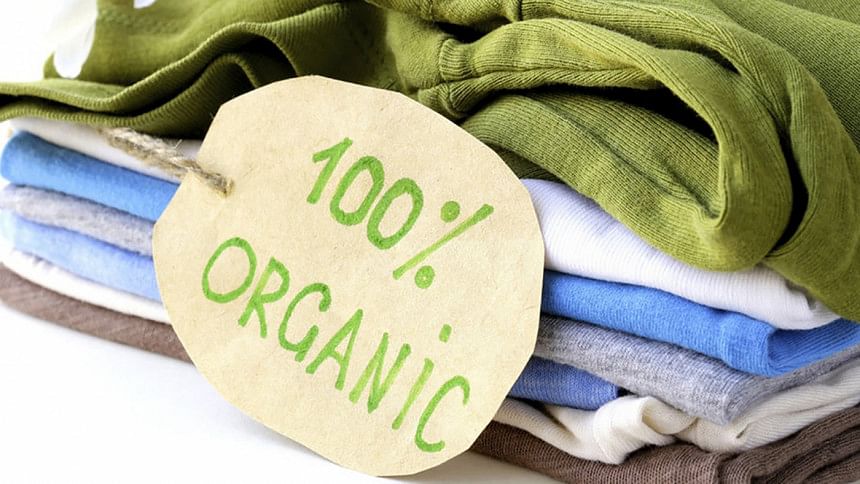Consumers: The missing link in sustainable apparel

Who should pay to make apparel supply chains more sustainable? This is a question we hear a lot, and it is also one which causes a great many disagreements between factory owners and apparel brands. Factory owners complain that apparel buyers drive a hard bargain on price and that, at the end of negotiations, there is little room left for extra spending on technological upgrading. Brands, on the other hand, claim they have their own pressures and that, actually, this is the way the industry works. People are in business to make money and, in a highly competitive industry, they have little choice but to keep costs to a minimum. If this means placing price pressure on suppliers, so be it.
There is another factor here which perhaps is not given enough consideration: end consumers. For while the apparel industry and its supply chain gets itself in a tangle over the issue of costings and prices, the one clear winner continues to be those purchasing the clothing.
For an economics student, the global apparel industry provides a remarkable case study. Is there any other industry where price deflation has been such a constant theme over such a prolonged period? The US Bureau of Labour Statistics recently produced some data which showed that consumer spending on apparel as a percentage of total consumer expenditure has more than halved to two per cent from five per cent in 1987. This major 12-month study found that apparel was the only major consumer spend category to fall over the same period, with all other categories, including entertainment, dining out, alcohol, and furniture remaining relatively stable.
But here's the thing: the same research showed that people are actually purchasing far more clothing than at any time in history. How can this make sense? How can consumers be buying more clothing than ever yet the percentage of their income which they actually spend on apparel has fallen dramatically? The answer is rather obvious: deflation in the apparel sector which has come about due to the offshoring of apparel production from the West to Asia.
Let's focus on this issue of price deflation and consumer expectations. This word—expectations—is key here. The problem which apparel brands face is that when you have given something to somebody—in this case, extremely cheap clothing—it is very difficult to take it away. Walk into a fast fashion store in London, New York, Paris or Madrid, and it's possible to buy a T-shirt, a pair of jeans, a pair of shoes and a jacket and still come away with change from 100 Euro. In some stores, you can buy jeans for as little as 10 Euro, T-shirts for less than 5 Euro, jackets for 10-15 Euro. This might be great for consumers, but this is just madness.
We hear a lot of talk that the Bangladeshi ready-made garment manufacturers are in a "race to the bottom". They might well be, but so are fast fashion brands.
This brings us back to the negotiations that take place between the apparel factories and brands. As a manufacturer, of course I would like to see an increase in unit prices paid to suppliers. But I can also see with my own eyes that if a brand is retailing a pair of jeans for 10 Euro or a T-shirt for 4 Euro, they have very little room for manoeuvre.
Consider the efforts that go into making a cotton T-shirt. People are paid to pick the cotton, the cotton is sold to factories, the seeds are extracted, the bolls cleaned, and the fibres spun into thread. A trader buys the spools of thread to be sold to mills, the mills produce the dye and the fabric, the fabric is sold to manufacturers, manufacturers create T-shirts and these then have to be shipped around the world before they can be sold in stores.
All these steps, all these efforts for a 4 Euro T-shirt!
How has it reached this stage and what can we do about it? There are many surveys which suggest that consumers would happily pay more for clothing that is sustainably produced. Really? I don't see this sentiment translating into actual actions. What I do see is a market in which consumers are happy to hand over just a few Euros for their new sweater or trousers, never questioning how or why the retailer managed to provide it so cheap. Ignorance is bliss, as they say.
For the industry to change, for us to move towards a model in which suppliers are paid a fair price for their products—a price that allows them to pay workers a living wage while producing products through sustainable production methods—we need higher end prices for clothing. It really is that simple.
And how can these higher end prices be achieved? There are no easy answers here, but we must not despair. Transparency and openness are key, and as part of this we need to educate consumers, most of whom at present have their heads buried in the sand on this issue.
How about better hang tags for apparel products? If hang tags were required by law to provide better information to consumers, we could start to turn the needle on this issue. For instance, what if hang tags, while providing details on supplier information, also provided information about the product across all steps of the supply chain? Perhaps if consumers realised the complex array of steps required to provide the shirt on their back, they would be happier to pay a fairer price for it.
Better hang tags could be supported by marketing from brands. This is something the whole industry could collaborate on, an area in which they could put competitive considerations to one side. It's in the interests of all apparel brands to begin to "tell the story" of the clothing. The story of where it was made, how it was made, the steps it went through to reach the store, the skills of those making it. The "story-telling" of a clothing item should be part of its marketing. It should be used to add value.
Clothing, for way too long, has been treated like a commodity. Who'd pay a premium for a commodity of which there is an over-supply?
If we really want sustainable supply chains, we've got to shift away from this commodity model and put the value back into clothing items. Consumers say they want sustainably made clothing so it's up to brands to tell them the story of their clothing and why they need to be paying more for it.
Mostafiz Uddin is the Managing Director of Denim Expert Limited. He is also the Founder and CEO of Bangladesh Denim Expo and Bangladesh Apparel Exchange (BAE).
Email: [email protected]

 For all latest news, follow The Daily Star's Google News channel.
For all latest news, follow The Daily Star's Google News channel. 



Comments